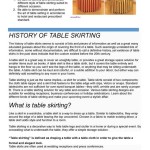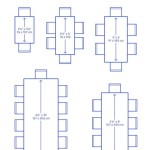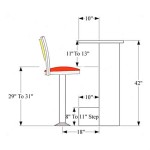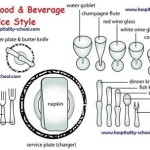Rug Under Kitchen Table: Yes or No?
The decision of whether to place a rug under a kitchen table is a common design dilemma. It involves weighing the aesthetic benefits against practical considerations. This article explores the advantages and disadvantages of using a kitchen table rug to help inform this choice.
Advantages of a Rug Under the Kitchen Table
A rug can significantly enhance the kitchen's visual appeal. It anchors the dining area, adds warmth, and introduces color and pattern to the space. Rugs also offer comfort underfoot and can help define the dining zone within an open-plan kitchen.
Protection for Flooring
Kitchen floors are prone to scratches and scuffs from chair legs and dropped objects. A rug acts as a protective barrier, safeguarding the floor from damage and extending its lifespan. This is particularly beneficial for hardwood or tile floors.
Noise Reduction
The clatter of dishes and chairs scraping against a hard floor can be disruptive. A rug absorbs sound, reducing noise levels and creating a calmer, more pleasant atmosphere in the kitchen.
Comfort and Warmth
Standing on a hard floor for extended periods can be tiring and uncomfortable. A rug introduces a softer surface underfoot, making it more comfortable to stand while preparing meals or socializing around the kitchen table. In colder climates, a rug can add a layer of insulation, making the space feel warmer and more inviting.
Style and Aesthetics
Rugs are available in an endless array of colors, patterns, textures, and sizes. This allows homeowners to express their personal style and enhance the overall aesthetic of the kitchen. A rug can complement existing décor, introduce a focal point, or tie together disparate elements in the room.
Defining the Dining Space
In open-plan kitchens, a rug can help define the dining area and visually separate it from other functional zones, such as the cooking area or living space. This creates a more organized and cohesive layout.
Disadvantages of a Rug Under the Kitchen Table
While rugs offer numerous benefits, they also present some challenges in the kitchen environment, primarily related to cleanliness and maintenance.
Cleaning Challenges
Kitchens are prone to spills and crumbs, making rugs more susceptible to stains and soiling. Regular cleaning is essential, and some spills may require professional cleaning to prevent permanent damage. Choosing the right rug material is critical to minimizing cleaning difficulties.
Tripping Hazard
A rug can present a tripping hazard, especially if it isn't properly secured to the floor. Using a rug pad can help prevent slippage and create a more stable surface.
Cost
Rugs can range in price from relatively inexpensive to quite costly, depending on the size, material, and craftsmanship. This added expense must be factored into the budget.
Material Considerations
Choosing the right rug material for the kitchen is essential. Natural fibers like wool or cotton are durable and comfortable but can be more difficult to clean. Synthetic fibers like polypropylene or nylon are stain-resistant and easier to clean but may not offer the same level of comfort or aesthetic appeal. Consider the level of foot traffic and the potential for spills when choosing a rug material.
Size and Placement
Selecting the right size rug is crucial for achieving the desired aesthetic effect. The rug should be large enough to accommodate the table and chairs with enough space for chairs to be pulled out comfortably without catching on the edge of the rug. Proper placement ensures the rug is centered under the table and creates a balanced look.
Maintenance and Upkeep
Regular vacuuming is necessary to remove crumbs and dirt. Spot cleaning should be done immediately to prevent stains from setting. Depending on the material, professional cleaning may be required periodically. Rotating the rug periodically can help ensure even wear and tear.
Alternatives to Rugs
For those hesitant about using a rug in the kitchen, there are alternatives to consider for achieving some of the same benefits. Chair pads can protect the floor from scratches and provide added comfort. Area rugs made from durable, easy-to-clean materials can be used in adjacent spaces to define zones and add warmth. Investing in high-quality, stain-resistant flooring can also minimize the need for a rug.
Making the Right Decision
Ultimately, the decision of whether to use a rug under the kitchen table is a personal one based on individual needs and preferences. Carefully considering the advantages and disadvantages, coupled with an assessment of lifestyle and design priorities, will help homeowners make an informed choice that enhances their kitchen space.

What Size Rug Under Dining Table Here S The Best Way To Find Righ

6 Rules For Choosing A Dining Room Rug Pretty Sources Stonegable

Simple Rules For Dining Room Rugs Floorspace

A Rug Under The Kitchen Table Yes Even With Messy Kids Homes I Have Made

Rug Or No Under Dining Table

How To Choose The Best Area Rugs For Dining Rooms Angi

6 Rules For Choosing A Dining Room Rug Pretty Sources Stonegable

A Rug Under The Kitchen Table Yes Even With Messy Kids Homes I Have Made

20 Best Dining Room Rugs 2024 S Top Picks

6 Rules For Choosing A Dining Room Rug Pretty Sources Stonegable








